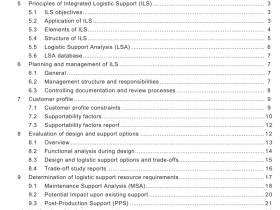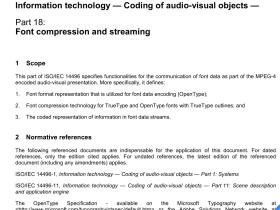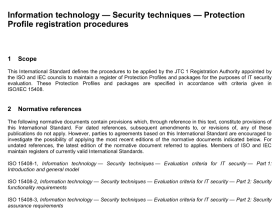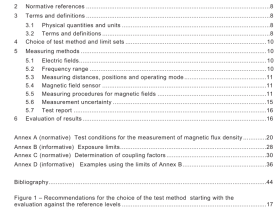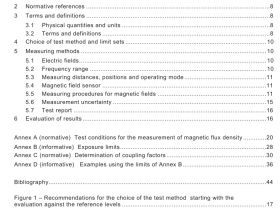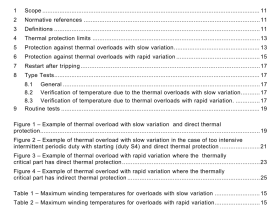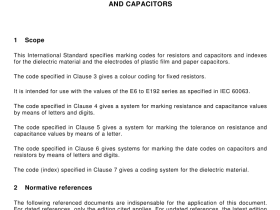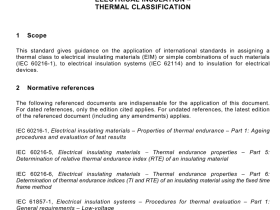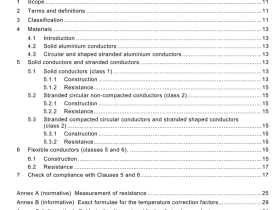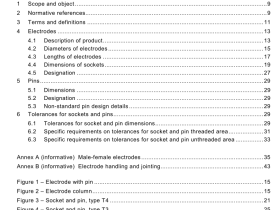IEC TS 62578 pdf download
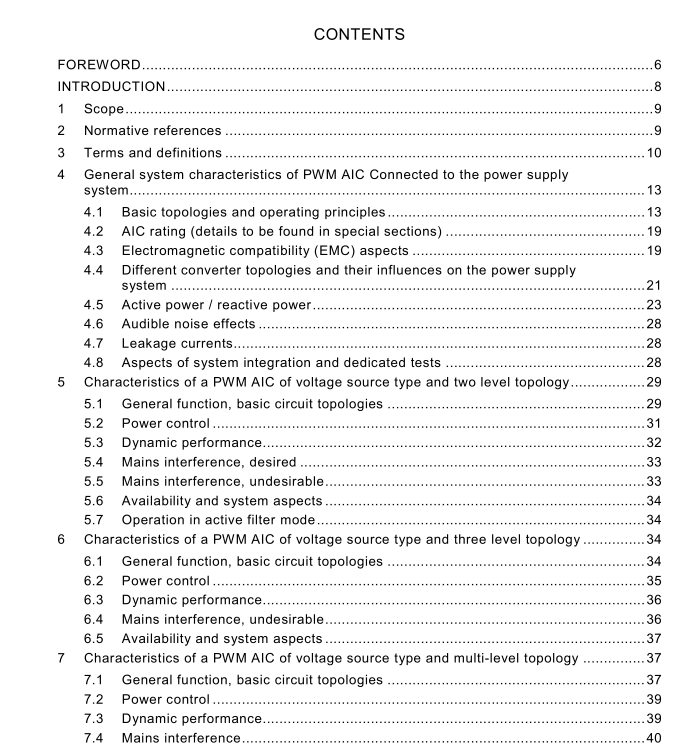
IEC TS 62578 pdf download Power electronics systems and equipment – Operation conditions and characteristics of active infeed converter applications
For the fundamental frequency and the controllable harmonics, the supply-side filter may be regarded as purely inductive. The voltage drop across the total impedance drives the supply- side current. Quick changes of this supply-side current obviously require high values of the voltage across the total impedance and therefore a higher rated supply-side and thus d.c.- side voltage of the converter. Such quick changes of the line current are required for the control of higher-frequency current components and during dynamic changes.
4.1.4 Pulse patterns
The selected pulse pattern generation influences the characteristics of the converter very much. Three main basic pattern generation schemes are space vector modulation, optimised synchronous pulse patterns and line flux guidance.
It should be noted that space vector modulation and symmetric pulse width modulation lead to identical pulse patterns.
In case of space-vector modulation a sequence of zero states and non-zero voltage space vectors is selected in such a way that the voltage space vector requested by the control results as a mean value of the sequence. The zero states selected have to be of equal duration
In case of symmetric pulse-width modulation a set-point curve is compared to a triangular reference function. Two ways of treating the set-point curve are known: Natural sampling directly compares the (analogue) curve to the triangular reference function. Regular sampling samples values of the set point curve at the extreme values of the triangular function and compares these sampled values to the reference function. Digital controllers normally use regular sampling.
The difference between the two methods is small but leads to slightly different generated harmonics. A suitable instantaneously defined zero-sequence component added to the reference values assures equal zero-state duration. This is sometimes called “addition of a third order harmonic”. The result is identical to space vector modulation .
4.1.5 Control methods A basic introduction into control methods is described in Annex A.1 . More detailed description could be found in the references.
4.1.6 Control of current components The AIC gives the possibility to adjust the fundamental and controllable harmonic components fed into or taken from the line. This feature can effectively be used for control purposes. As a secondary effect, high frequency components are generated which might have to be mitigated by a suitable filter.
The line voltage seen in Figure 3 is normally unknown, as well as the line impedance that may change without notice, depending on the actual line configuration, including other loads attached. Therefore, control schemes usually base on the measurable voltage at the IPC, see Figure 1 and Figure 2. In addition, d.c.-link quantities are measured.
